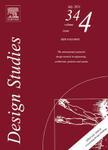版权所有:内蒙古大学图书馆 技术提供:维普资讯• 智图
内蒙古自治区呼和浩特市赛罕区大学西街235号 邮编: 010021

作者机构:Computer Applications Research Department of Architectural Science University of Sydney Sydney NSW 2006 Australia
出 版 物:《Design Studies》 (Des Stud)
年 卷 期:1980年第1卷第4期
页 面:227-230页
学科分类:12[管理学] 08[工学] 0501[文学-中国语言文学] 0303[法学-社会学] 1305[艺术学-设计学(可授艺术学、工学学位)] 0502[文学-外国语言文学] 0810[工学-信息与通信工程] 1301[艺术学-艺术学理论] 0101[哲学-哲学] 1201[管理学-管理科学与工程(可授管理学、工学学位)] 0805[工学-材料科学与工程(可授工学、理学学位)] 0813[工学-建筑学] 0814[工学-土木工程] 0811[工学-控制科学与工程] 0812[工学-计算机科学与技术(可授工学、理学学位)]
摘 要:This paper shows that optimization concepts are particularly useful in design because of their direct assistance in decision making. In this they subsume evaluation or appraisal techniques. One approach based on dynamic programming is presented as being directly applicable in computer-aided architectural design. Multi-attribute objectives in design can be handled using optimization concepts. Finally, multi-objective design, including multi-attribute multi-objective design, can be handled via the use of Pareto optimality approaches. The result of such processes is a solution database which the designer searches. The solution database contains information about the design decisions themselves as well as the performance of each solution in its various objectives. The designer still assumes responsibility for selecting particular solutions since there is no unique solution produced. It is suggested that any problem which can be manipulated quantitatively can be solved using these concepts. © 1980.